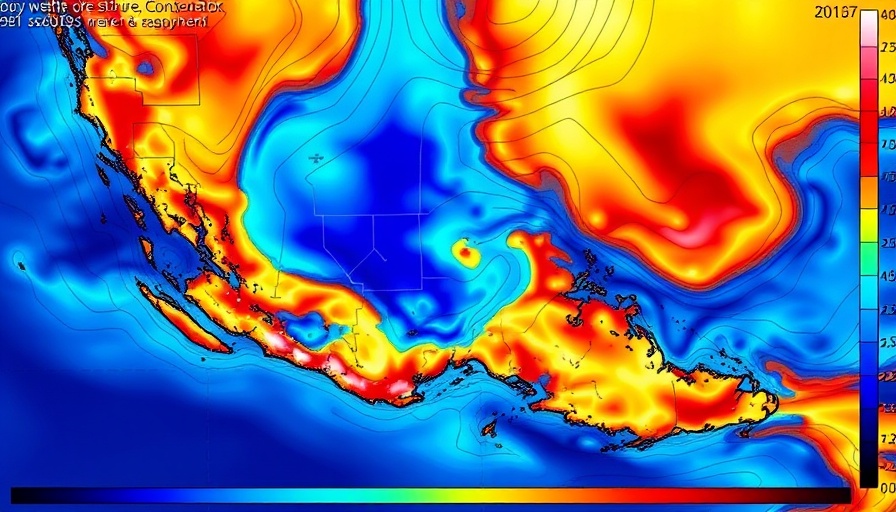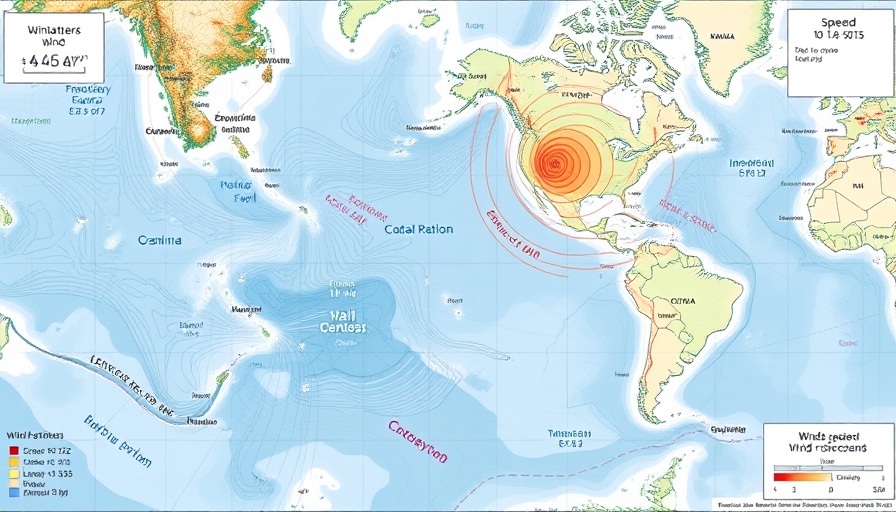
Rising Temperatures and Wildfire Threats: What to Expect
As we move further into August, residents of California and the Southwest are bracing for a major heatwave that is not just going to crank up the thermometer but also elevate the risk of wildfires. This summer has shown a remarkable shift in climate patterns, leading to both record-breaking heat and a surge of moisture that could finally bring much-needed relief. Understanding these upcoming conditions is vital for the safety and well-being of everyone in the affected areas.
A Record Heatwave in Sight
The impending heatwave, expected to begin Wednesday, is predicted to stretch across the Southwest and into parts of British Columbia. This will be the most significant warm event of the season, particularly for coastal and desert areas of California, where daily temperature records might be shattered. The notable aspect of this heatwave isn’t just the daytime temperatures but the sustained overnight warmth as lows may not dip below 70-80 degrees Fahrenheit in many areas. This is a clear signal to residents to prepare for heightened temperatures that will last well into next week.
The Wildfire Risk Looms
The increased temperatures along with the persistence of dry conditions raise alarms for potential wildfires. Wildfire risks spike considerably during extreme heat spells, especially in regions like Southern California and Arizona. Fire experts warn that this combined with the dry vegetation could lead to dangerous fire conditions. Residents are advised to exercise caution and prepare early by cleaning gutters, trimming back overgrown plants, and creating a defensible space around their properties.
The Role of the Monsoon: A Double-Edged Sword
Interestingly, alongside the heatwave, there is also a significant monsoonal surge heading towards the region. This could potentially bring much-needed rainfall to drought-stricken areas, but it also poses a risk of flash floods and mudslides in rugged terrain. Areas currently facing exceptional drought conditions may see relief, though the lack of infrastructure to handle sudden heavy rains could lead to dangerous conditions after prolonged dry spells.
Historical Context and Background
Understanding the context surrounding this current weather pattern is essential. Historically, August in the Southwest has been a month of fluctuating weather extremes, where heat and monsoon moisture can collide. Past trends show that as climate change progresses, we are witnessing more pronounced weather extremes, making this summer's temperature spikes and storm patterns not entirely unexpected.
What Residents Should Know Now
As the heatwave approaches, locals are encouraged to take proactive measures. The California state government typically issues heat advisories during such events, emphasizing the importance of staying hydrated, avoiding the outdoors during peak heat hours, and preparing properties for possible fire threats. Additionally, with the weather becoming less predictable, having an emergency plan in place could provide peace of mind under these extreme conditions.
Future Predictions: Is This the New Normal?
Climate experts suggest that as we continue down the path of climate change, extreme conditions like these will become more frequent. Increased temperatures coupled with fluctuating monsoon patterns might emerge as the new normal for California and the Southwest. Communities must continue to adapt to these shifts, not just regarding weather preparedness but also in how they design urban spaces and manage natural resources.
In conclusion, while the ongoing heatwave may bring frustration and risk, there are preparations that can be made to mitigate its effects. By staying informed and proactive, San Diegans and all those in the Southwest can better navigate this challenging summer climate.
 Add Row
Add Row  Add
Add 




Write A Comment